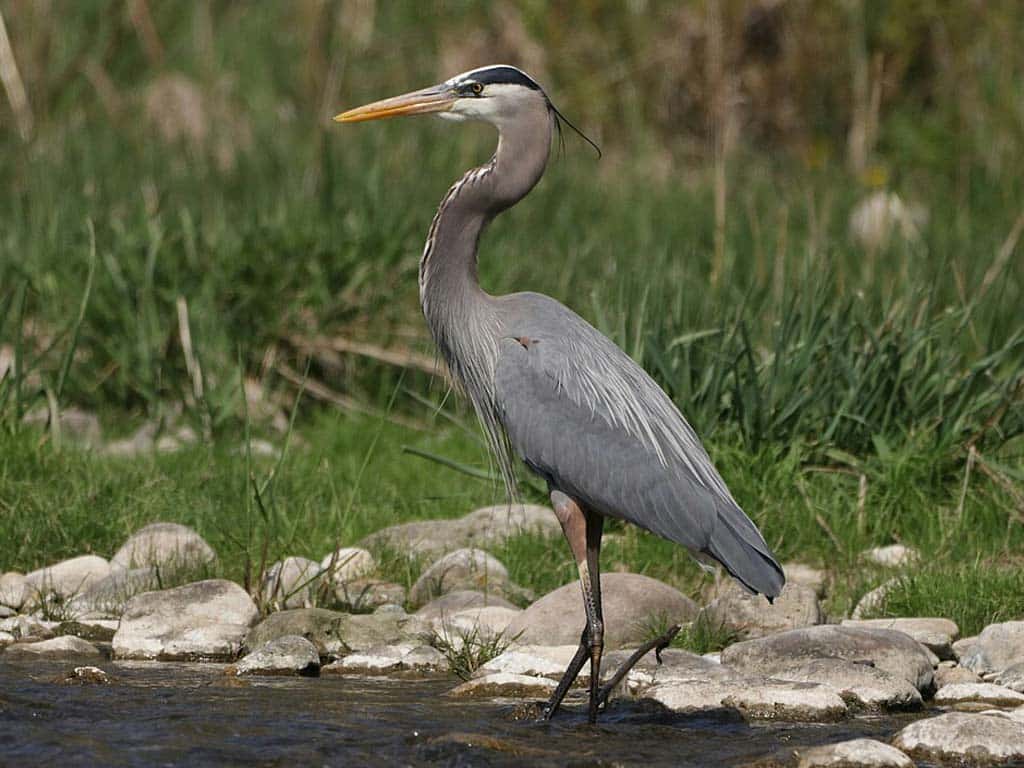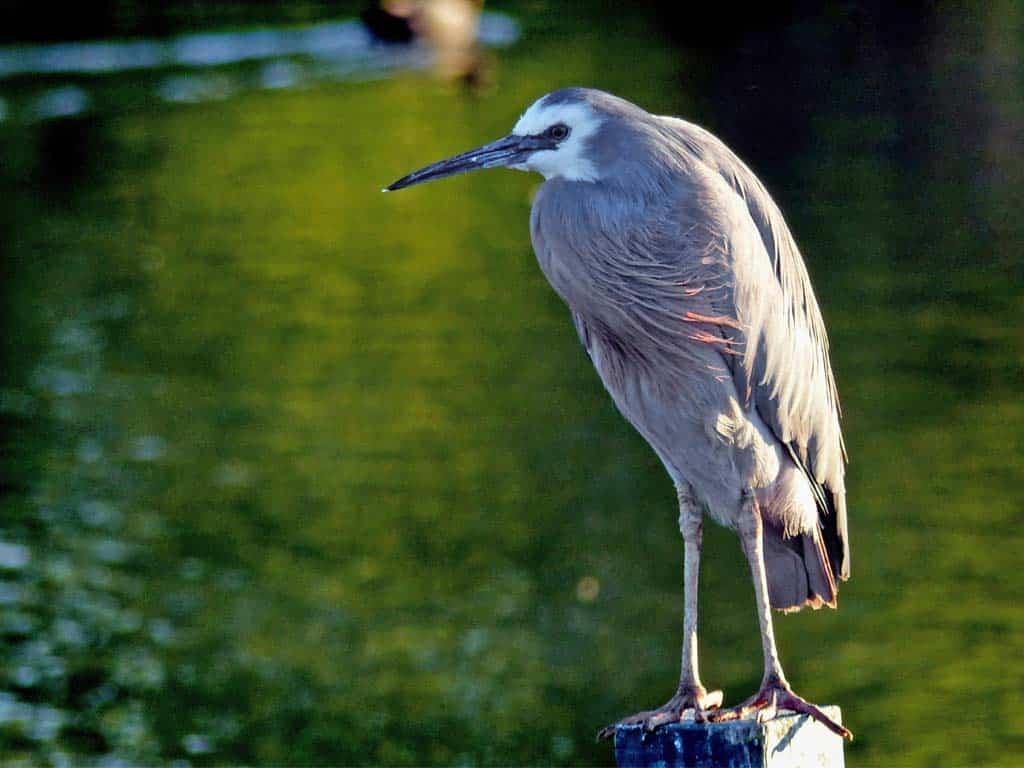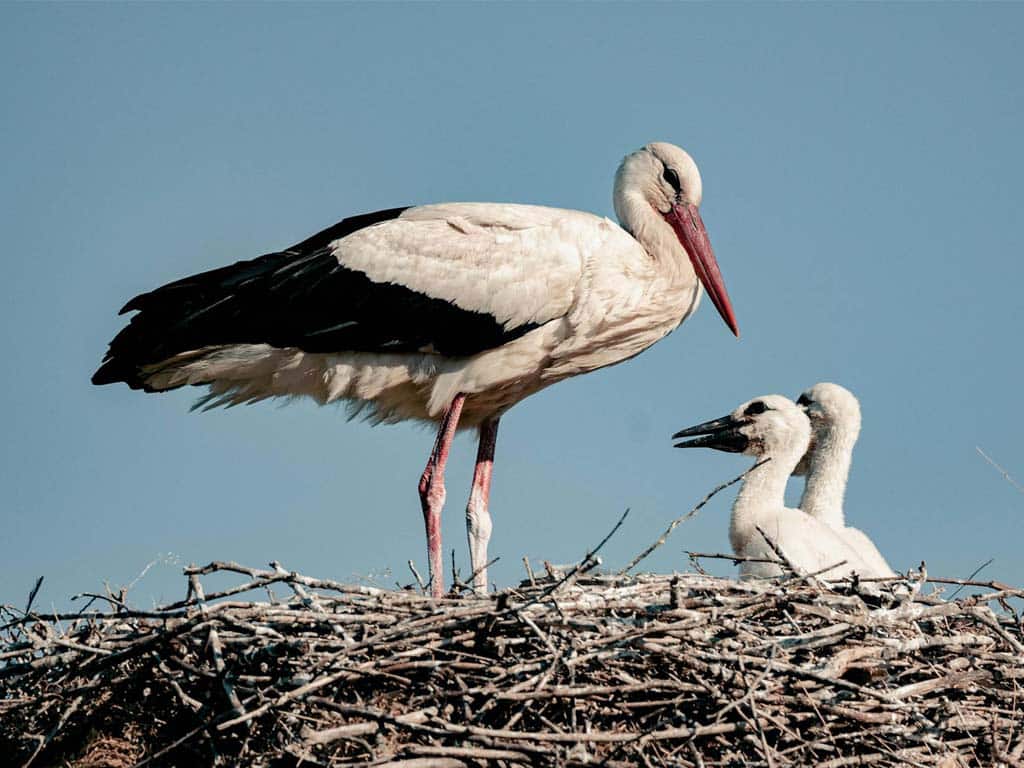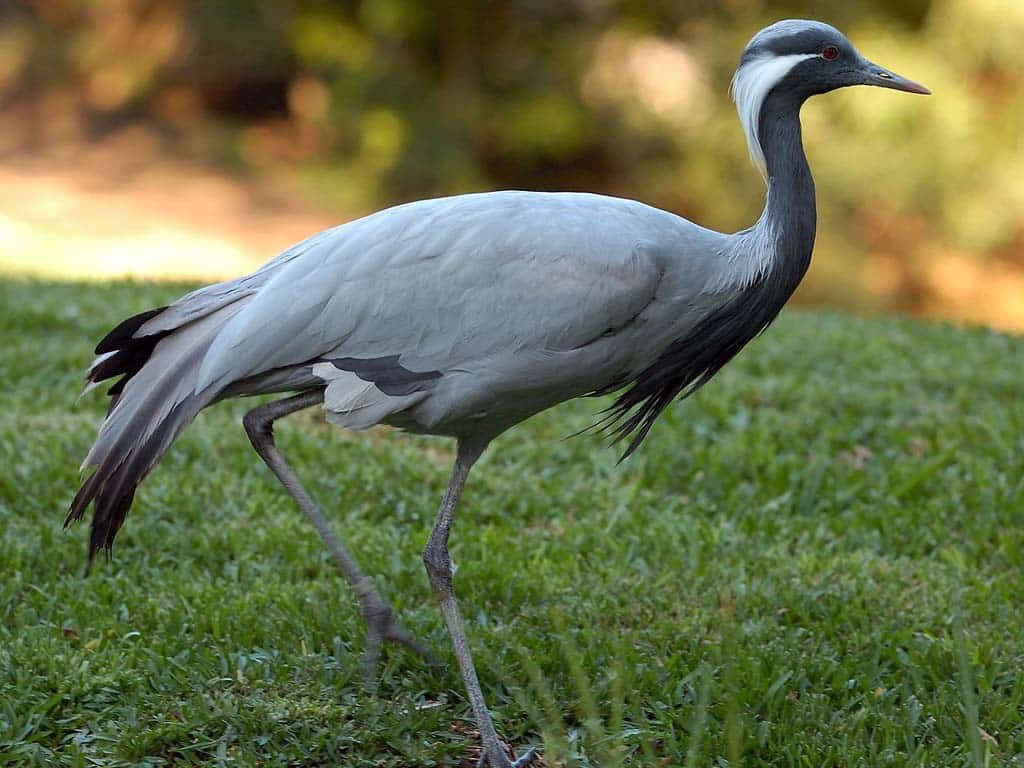Crane vs Heron comparisons reveal fascinating differences between these elegant wetland birds.
In the world of bird enthusiasts and nature lovers, few sights are as captivating as the elegant silhouettes of cranes and herons against a misty wetland backdrop.
These long-legged waders, with their graceful movements and striking appearances, often spark confusion and curiosity. Are they the same? What sets them apart?
Let’s embark on an in-depth journey to explore the fascinating world of cranes and herons, distinguishing their unique characteristics and uncovering the secrets of their lives.
Crane vs Heron distinctions become apparent when observing their physical features and behaviors closely. While both birds are adapted to wetland habitats, cranes generally have longer necks and legs compared to herons.
The Crane vs Heron debate also extends to their feeding habits, with cranes being more omnivorous and often foraging in fields, while herons are primarily fish-eaters that hunt in shallow waters.
Understanding these differences not only enhances our birdwatching experiences but also provides insight into the diverse adaptations of wetland species.
Evolutionary Journeys: The Divergent Paths of Crane vs Heron
To truly understand the differences between cranes and herons, we must first delve into their evolutionary past. Both groups have ancient roots, but their paths diverged millions of years ago.
Ancient Origins: Fossil Records
Cranes and herons belong to different families within the order Gruiformes. The crane family, Gruidae, has a fossil record dating back to the Eocene epoch, roughly 40 million years ago. The oldest known crane fossil, Palaeogrus hordwelliensis, was discovered in Hampshire, England.
On the other hand, the heron family, Ardeidae, has an even more ancient lineage. Fossil evidence suggests that heron-like birds existed as far back as the Paleocene epoch, over 60 million years ago. The oldest known heron fossil, Proherodius oweni, was found in England and dates to about 55 million years ago.
Adaptive Radiation
Over millions of years, both cranes and herons underwent adaptive radiation, evolving to fill various ecological niches across the globe. This process led to the diverse array of species we see today.
- Cranes adapted to various habitats, from wetlands to grasslands, developing specialized diets and behaviors.
- Herons diversified primarily within aquatic environments, evolving different hunting strategies and morphologies.
Current Taxonomy: Crane vs Heron Family Trees
Understanding the taxonomy of these birds is crucial for proper identification and appreciation of their diversity.
Gruidae (Cranes)
The crane family consists of 15 extant species divided into four genera:

- Grus (11 species)
- Anthropoides (2 species)
- Balearica (2 species)
- Leucogeranus (1 species)
Notable examples include:
- Sandhill Crane (Grus canadensis)
- Whooping Crane (Grus americana)
- Demoiselle Crane (Anthropoides virgo)
- Sarus Crane (Grus antigone)
Ardeidae (Herons, Egrets, Bitterns)
The heron family is more diverse, with about 64 recognized species across 17 genera. Some key genera include:

- Ardea (Great herons)
- Egretta (Egrets)
- Nycticorax (Night herons)
- Botaurus (Bitterns)
Examples of well-known species:
- Great Blue Heron (Ardea herodias)
- Little Blue Heron (Egretta caerulea)
- Cattle Egret (Bubulcus ibis)
- Snowy Egret (Egretta thula)
Check this out Are Penguins Friendly Or Are Penguins Dangerous?
Physical Characteristics: Crane vs Heron Side-by-Side Comparison
While both cranes and herons share some superficial similarities, a closer look reveals distinct differences in their physical attributes.
Size and Stature: Crane vs. Heron Measurements
| Attribute | Cranes | Herons |
| Height Range | 3 to 5.75 feet | 1 to 4.5 feet |
| Weight Range | 6.5 to 26 pounds | 1 to 10 pounds |
| Neck Shape | Straight | S-shaped |
| Leg Length | Very long | Long to medium |
“The crane is the tallest flying bird in North America, with the Whooping Crane standing at an impressive 5 feet tall!” – Cornell Lab of Ornithology
Plumage and Coloration: Crane vs Heron Feather Distinctions
Cranes typically display:
- Muted colors (gray, white, black)
- Distinctive red patches on the head (in some species)
- Ornamental wing feathers that droop over the tail
Herons exhibit:
- A wider range of colors (blue, gray, white, russet)
- Sleek, streamlined plumage
- Often have long, thin plumes during breeding season
Distinctive Features: Crane vs Heron Unique Traits
- Cranes:
- Bare facial skin, often brightly colored
- Shorter, thicker bills
- Ornamental head plumes in some species
- Herons:
- Dagger-like bills, perfect for spearing fish
- S-curved necks that can strike with lightning speed
- Long, thin legs with specially adapted toes for wading
Behavioral Quirks: Crane vs Heron Adaptations
The behavior of cranes and herons reflects their evolutionary adaptations and ecological roles.
Feeding Strategies: Crane vs Heron Foraging Techniques
Crane foraging techniques:

- Walk slowly through fields, probing the ground
- Omnivorous diet including grains, insects, and small animals
- Use their bills to dig for tubers and roots
Heron’s patient stalking:

- Stand motionless in shallow water, waiting for prey
- Lightning-fast neck strikes to catch fish
- Some species, like the Cattle Egret, follow large animals to catch disturbed insects
Check this out Why Do Crows Chase Hawks? Do Crows Hate Hawks?
Diet Comparison: What Cranes vs Herons Eat
| Food Type | Cranes | Herons |
| Fish | Occasional | Primary |
| Insects | Common | Common |
| Grains/Seeds | Primary | Rare |
| Small Mammals | Occasional | Occasional |
| Amphibians | Common | Common |
| Crustaceans | Occasional | Common |
Vocalizations: Crane vs Heron Communication
Crane’s trumpeting calls:
- Loud, resonant, and can be heard for miles
- Complex duets between mated pairs
- Used for territorial defense and flock coordination
Heron’s squawks and grunts:
- Generally quieter and less musical
- Harsh croaks and squawks, especially when disturbed
- Soft grunts and bill claps during courtship
Flight Patterns: How Cranes vs Herons Take to the Sky
- Cranes:
- Fly with necks and legs fully extended
- Often form V-shaped flocks during migration
- Capable of soaring on thermals
- Herons:
- Fly with necks folded in an S-shape
- Usually fly alone or in small, loose groups
- Steady wing beats with occasional gliding
Reproduction: Crane vs Heron Family Life
The breeding habits of cranes and herons offer fascinating insights into their social structures and parental care strategies.
Courtship Rituals: Crane vs Heron Mating Displays
Crane’s elaborate dances:
- Bowing and leaping
- Wing flapping and head bobbing
- Synchronized movements between partners
- Can last for hours or even days
Heron’s subtle displays:
- Stick presentations to potential mates
- Crest raising and neck stretching
- Aerial displays in some species
- Generally less elaborate than crane dances
Nesting Habits: Crane vs Heron Home-building
| Aspect | Cranes | Herons |
| Nest Location | Ground, often in shallow water | Trees, bushes, or reeds |
| Nest Type | Simple platform of vegetation | Sturdy stick platform |
| Colonial Nesting | Rare (except Sandhill Cranes) | Common in many species |
| Clutch Size | Usually 2 eggs | 3-5 eggs (varies by species) |
Parental Care: Crane vs Heron Chick-rearing
- Cranes:
- Both parents incubate eggs and care for young
- Chicks are precocial, able to walk within hours of hatching
- Family groups stay together for up to a year
- Herons:
- Shared incubation and chick-rearing duties
- Chicks are altricial, requiring extensive care
- Young typically leave the nest after 6-8 weeks
Check this out 24 Yellow Birds In Ohio With Photos
Habitats and Distribution: Where to Find Cranes vs Herons

The habitats and distribution of cranes and herons reflect their ecological adaptations and evolutionary history.
Wetland Specialists vs. Generalists: Crane and Heron Habitats
Cranes are more versatile:
- Wetlands
- Grasslands
- Agricultural fields
- Tundra (for some species)
Herons are primarily aquatic:
- Freshwater marshes
- Coastal lagoons
- Mangrove swamps
- Rivers and lakes
Migration Patterns: Crane vs Heron Journeys
Long-distance crane journeys:
- Many crane species are long-distance migrants
- The Siberian Crane flies over 5,000 miles each way
- Critical stopover sites are essential for refueling
Heron’s more localized movements:
- Some species are year-round residents
- Others make shorter seasonal movements
- Dispersal of juveniles can cover significant distances
Global Distribution: Crane vs Heron Hotspots
| Region | Notable Crane Species | Notable Heron Species |
| North America | Sandhill Crane, Whooping Crane | Great Blue Heron, Green Heron |
| Europe | Common Crane | Grey Heron, Little Egret |
| Africa | Black Crowned Crane, Wattled Crane | Goliath Heron, Black Heron |
| Asia | Red-crowned Crane, Sarus Crane | Chinese Egret, Japanese Night Heron |
| Australia | Brolga | White-faced Heron, Nankeen Night Heron |
Ecological Roles: Crane vs Heron Environmental Impact
Both cranes and herons play crucial roles in their ecosystems, serving as indicator species for wetland health.
Keystone Species: Crane and Heron Ecosystem Contributions

- Cranes:
- Seed dispersal in grasslands and wetlands
- Bioturbation (mixing of sediments) in shallow waters
- Cultural keystone species in many regions
- Herons:
- Top predators in aquatic food webs
- Nutrient transfer between aquatic and terrestrial systems
- Regulators of fish populations
Check this out How and Where Do Geese Sleep? The Secrets of Goose Slumber
Predator-Prey Relationships: Crane and Heron Food Web Positions
Cranes as prey:
- Vulnerable to large raptors and mammalian predators
- Eggs and chicks at risk from raccoons, foxes, and corvids
Herons as predators:
- Primarily fish-eaters, but also consume a variety of aquatic life
- Some larger species can take small mammals and birds
Environmental Impact: How Cranes vs. Herons Shape Their Surroundings
- Cranes:
- Grazing can shape plant communities
- Trampling creates microhabitats for other species
- Herons:
- Guano enriches water bodies, affecting algal growth
- Nesting colonies can alter vegetation structure in trees
Cultural Significance: Crane vs. Heron in Human Society
Cranes and herons have captivated human imagination for millennia, appearing in art, literature, and folklore across cultures.
Symbolism: Crane and Heron Representations in Art and Literature
- Cranes:
- Symbols of longevity and fidelity in East Asian cultures
- Associated with wisdom and vigilance in ancient Greece
- Featured in Japanese origami and brush painting
- Herons:
- Embodiments of patience and grace in many traditions
- Sacred birds in ancient Egypt, associated with creation
- Prominent in Art Nouveau designs
Traditional Medicine and Folklore
“In some Native American traditions, the heron is seen as a symbol of patience and self-reliance, while the crane often represents wisdom and leadership.” – Native American Folklore Compendium
Ecotourism: Crane vs. Heron Birdwatching Hotspots

Both cranes and herons are popular targets for birdwatchers and wildlife photographers. Notable locations include:
- Bosque del Apache National Wildlife Refuge, New Mexico (Sandhill Cranes)
- Everglades National Park, Florida (Various heron species)
- Bharatpur Bird Sanctuary, India (Sarus Cranes and multiple heron species)
- Camargue, France (Greater Flamingos and various herons)
Check this out Finches In Florida – The Complete Guide To Florida Finches
Species Showdowns: Iconic Crane vs. Heron Comparisons
Let’s compare some iconic representatives of cranes and herons to highlight their unique characteristics.
Sandhill Crane vs. Great Blue Heron: North American Giants
| Attribute | Sandhill Crane | Great Blue Heron |
| Height | 3-4 feet | 3.2-4.5 feet |
| Wingspan | 5.5-7.5 feet | 5.5-6.6 feet |
| Weight | 6.5-14 pounds | 4.5-5.5 pounds |
| Coloration | Gray body, red forehead | Blue-gray plumage, white head |
| Habitat | Wetlands, grasslands | Wetlands, shorelines |
| Diet | Omnivorous (grains, insects, small animals) | Primarily fish, also small animals |
| Call | Loud, rattling “kar-r-r-o-o-o” | Deep, hoarse “frawnk” |
Whooping Crane vs. Great Egret: White Wader Comparison
| Attribute | Whooping Crane | Great Egret |
| Height | 5 feet | 3.3 feet |
| Wingspan | 7-8 feet | 4.3-5.6 feet |
| Weight | 15-17 pounds | 1.5-3.3 pounds |
| Coloration | White with black wingtips | All white |
| Conservation Status | Endangered | Least Concern |
| Breeding Display | Elaborate dances | Aigrette plume display |
| Migration | Long-distance migrant | Partial migrant |
Future Prospects: Conservation Challenges
As we face global environmental challenges, the fate of cranes and herons hangs in the balance.
Climate Change Impacts on Crane and Heron Populations
- Habitat loss due to sea-level rise and changing precipitation patterns
- Altered migration timing potentially leading to mismatches with food availability
- Increased frequency of extreme weather events affecting breeding success
Conservation Efforts: Crane and Heron Success Stories
- International Crane Foundation: Leading global crane conservation efforts
- Whooping Crane recovery: Population increase from 21 to over 500 birds
- Heron colony protection: Establishment of protected nesting sites
- Wetland restoration projects: Benefiting both crane and heron species
Citizen Science: How You Can Help Cranes and Herons
Readers can contribute to crane and heron conservation through:
- Participating in the Great Backyard Bird Count
- Joining local Audubon Society chapters for bird surveys
- Using apps like eBird to report sightings
- Supporting wetland conservation initiatives in their communities
Conclusion:
As we’ve explored the world of cranes and herons, we’ve uncovered a tapestry of similarities and differences that make these birds truly remarkable. From their ancient evolutionary paths to their crucial roles in modern ecosystems, cranes and herons continue to captivate and inspire.
The key to distinguishing between these majestic waders lies in careful observation of their physical traits, behaviors, and habitats. Whether you’re watching a Sandhill Crane dance across a misty field or a Great Blue Heron patiently stalk its prey, remember that you’re witnessing the result of millions of years of evolution and adaptation.
As stewards of our planet, it’s our responsibility to ensure that future generations can continue to marvel at the sight of cranes trumpeting across the sky and herons standing sentinel in our wetlands. By understanding and appreciating these birds, we take the first step towards protecting them and the habitats they call home.
So next time you’re near a wetland or open field, take a moment to look for these long-legged wonders. With the knowledge you’ve gained, you’ll be well-equipped to appreciate the unique beauty and importance of both cranes and herons in our natural world.







